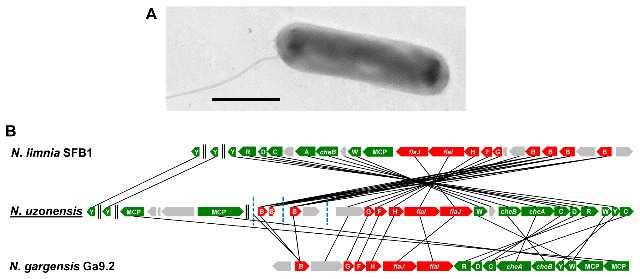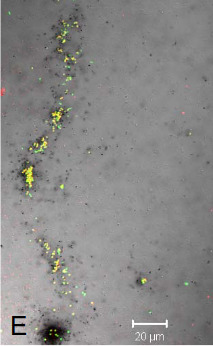Enrichment and genome sequence of the group I.1a ammonia-oxidizing Archaeon 'Ca. Nitrosotenuis uzonensis' representing a clade globally distributed in thermal habitats
Autor*innen
Datum
2013
Abstract
The discovery of ammonia-oxidizing archaea (AOA) of the phylum Thaumarchaeota and the high abundance of archaeal ammonia monooxygenase subunit A encoding gene sequences in many environments have extended our perception of nitrifying microbial communities. Moreover, AOA are the only aerobic ammonia oxidizers known to be active in geothermal environments. Molecular data indicate that in many globally distributed terrestrial high-temperature habits a thaumarchaeotal lineage within the Nitrosopumilus cluster (also called 'marine' group I.1a) thrives, but these microbes have neither been isolated from these systems nor functionally characterized in situ yet. In this study, we report on the enrichment and genomic characterization of a representative of this lineage from a thermal spring in Kamchatka. This thaumarchaeote, provisionally classified as 'Candidatus Nitrosotenuis uzonensis', is a moderately thermophilic, non-halophilic, chemolithoautotrophic ammonia oxidizer. The nearly complete genome sequence (assembled into a single scaffold) of this AOA confirmed the presence of the typical thaumarchaeotal pathways for ammonia oxidation and carbon fixation, and indicated its ability to produce coenzyme F420 and to chemotactically react to its environment. Interestingly, like members of the genus Nitrosoarchaeum, 'Candidatus N. uzonensis' also possesses a putative artubulin-encoding gene. Genome comparisons to related AOA with available genome sequences confirmed that the newly cultured AOA has an average nucleotide identity far below the species threshold and revealed a substantial degree of genomic plasticity with unique genomic regions in 'Ca. N. uzonensis', which potentially include genetic determinants of ecological niche differentiation.
Band, Seiten
8 / 11, e80835

Aktivitätenlisten
-
- PLoS One. . 2013 -
-
Mediendateien
 Bild#1
Bild#1 Bild#2
Bild#2 Bild#3
Bild#3 Bild#4
Bild#4



